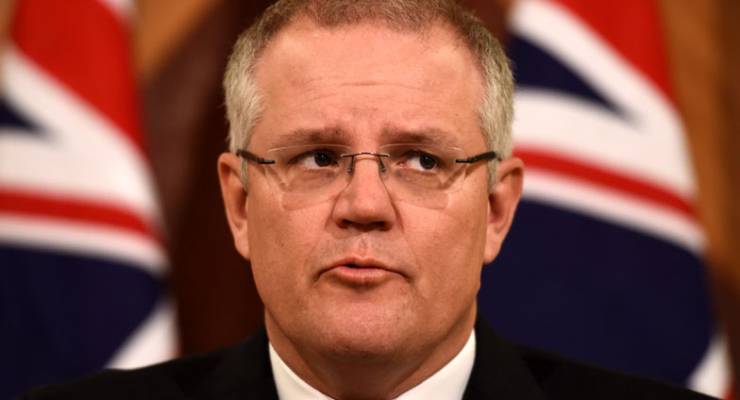
Monthly job numbers are the most eagerly anticipated output by the Australian Bureau of Statistics (ABS). They are also the most frustratingly useless. They have progressively become misleading to the point of deception.
Latest jobs numbers
Yesterday’s headline jobless rate is 5.6%, the equal lowest level the Coalition has achieved. The last lower number was 5.4% in February 2013, in the late Gillard years.
Disturbingly, however, the job participation rate has plummeted to 64.5%. We have to go back to 2005-06 for a lower level than that.
For Labor’s entire term — including the global financial crisis — participation never fell below 64.8%. It tumbled to 64.5% three months after the 2013 election, and has been recorded at that level five times since.
The real jobs situation
The deterioration in the jobs market since the Coalition came to office has been masked by the hundreds of thousands of full-time workers forced into part-time jobs. The headline unemployment rate does not take this into account.
Fortunately, the percentage of all employees working full time can be calculated fairly readily. In yesterday’s data, this fell to 67.84, the lowest in history.
So is there a better measure of the real jobless situation? Yes, but it takes some effort. The ABS does show monthly hours worked (Table 19, column C) and also the number of working-age people (Table 1, column DI). Collating the two gives us hours worked per adult per month.
This confirms serious deterioration in the jobs market over the last two years. Now, for the fourth month in a row, hours worked per adult per month are below 85.0. This is the first time this has happened since early 1994. The headline jobless rate back then was 10.4%.
When Paul Keating handed the reins to John Howard in March 1996, hours worked per month were up to 86.8. They then tumbled through the hapless Howard years, falling below 85.0 on four occasions before recovering. Throughout the Rudd/Gillard years, hours worked got above 90.0 for a while and never fell below 85.7.
Soon after Tony Abbott took office, hours worked fell to new lows, then further lows again after Malcolm Turnbull replaced Abbott. The current level is 84.64.
How the Coalition spins it
Minister for Employment Michaelia Cash was careful not to crow about yesterday’s overall job picture. But she did brag about women’s jobs:
“Encouragingly, female employment has risen to a record high of 5,554,000 and the youth unemployment rate fell by 0.2 percentage points, to 12.6%.”
Why not brag? Who is going to check? Well, Crikey did, and we found that hours worked per female adult per month was 66.40 in September, nowhere the record high. It is well below the level John Howard’s government achieved over its last 16 months, and below levels the Rudd/Gillard Government achieved for one 18-month streak and then another 21-month period through the global financial crisis. The record hours worked per female adult was 67.95 hours in June 2008, in the early Rudd years.
Cash’s brag about the youth rate is also not so truthful. Yes, the rate fell 0.2 points. But it is coming off highs her regime generated.
Throughout the Rudd/Gillard years, youth unemployment ranged between 7.6% and 12.5%. A year after Labor lost office it was up to 13.7%, then two months later up to 14.5%. We have to go back to 2002 to find the time before the 2013 election that so many kids were out of work.
Why is the data being reported like this?
The ABC is the one mainstream news outlet that makes an attempt at reporting more than the headline jobless rate. It does not crunch the monthly hours worked, but it did query yesterday’s ABS data. It quoted TD Securities head of Asia-Pacific research Annette Beacher saying:
“The numbers are rubbish. No one is going to believe these numbers. The massive shifts in full-time/part-time is very easy to discount.”
The ABC then explained that the bureau’s employment figures were based on a survey of only 26,000 households, a number reduced dramatically following severe funding cuts since 2013.
Better ABS data
Two additional time series would reveal the real state of the economy. First, the percentage of the workforce with full-time jobs. Second, hours worked per person per month. Both these show clearly — to the few who bother to calculate them — that the economy has deteriorated substantially since the Coalition came to office.








I think the subtext in the Liberal approach to the labour force is that a large pool of under-employed pushes down unskilled and semi-skilled wages. As I seem to recall from US studies, in states with low wages, employers tend to spend less on training.
Thus the current Aus situation (including temporary immigrant labour) is beneficial for those businesses that tend not to invest in their staff.
What a glorious future.
With 138 Qualified Teachers potentially being sacked from NSW gaols only to be replaced by unqualified contractors; I’d have to agree with Tom.
ABS employment data could never be taken literally month by month. It’s a sample survey. Unfortunately the data have deteriorated since a cash-strapped ABS reduced the sample and increased its reliance on self reporting on line. When professional interviewers were collecting most of the data the survey was much more reliable. However the series is still useful if read as it was designed to be read, that is to see trends over a period of time rather than monthly snapshots.
The figures are bad, but the LNP would prefer them to be worse if they thought they could hide them somehow…
Again those damned inconvenient facts overwhelm the preferred narrative (read mythology) of the tories being better economic genius.
“They are also the most frustratingly useless. They have progressively become misleading to the point of deception.”
Couldn’t agree more.